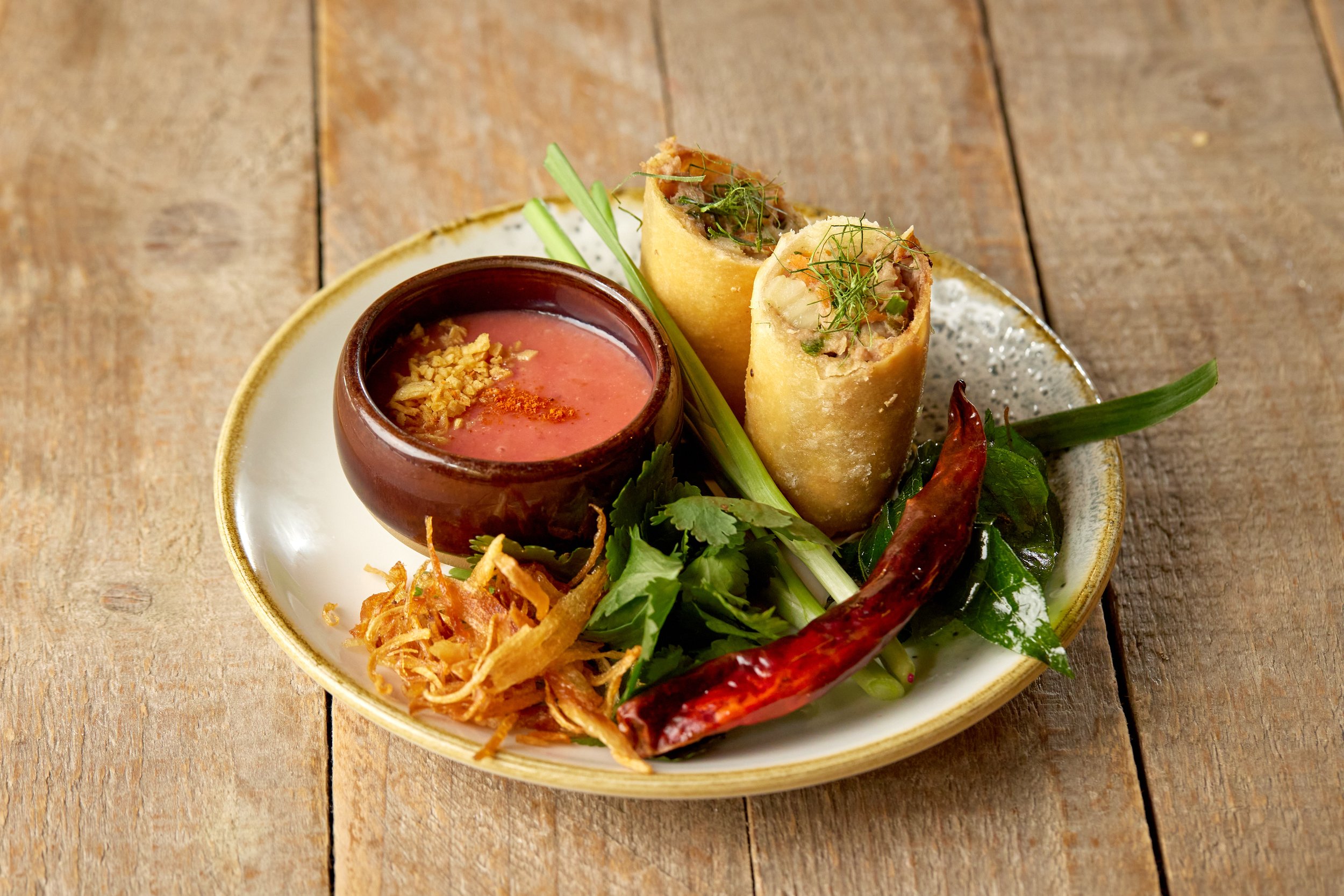Duck, chive & plum spring rolls

Ah, spring rolls! These delightful little parcels have a rich history, originating from the time when they were enjoyed as a seasonal dish to celebrate the arrival of spring. Traditionally filled with fresh vegetables and meats, spring rolls have evolved across various Asian cuisines, each adding its own unique twist. In this recipe, we bring together the succulent flavours of duck and plum, wrapped in a crispy shell, offering a taste that bridges tradition with innovation. Roll up your sleeves and let's explore the art of crafting these delicious bites that are sure to impress your guests!
Ingredients (Serves 3 to 4 as a snack or canapé):
3 duck legs
800ml rendered duck fat (vegetable oil can be used as a replacement, 50/50 oil and duck fat creates tasty results and saves some pennies)
400g ripe plums, de-stoned and chopped into quarters
4 cloves garlic, peeled & finely chopped or grated
20g ginger, peeled and roughly chopped or grated
2 spring onions, roots and outer layer removed, washed and finely sliced, separate the white and green
50g Chinese chives (salad chives can be substituted), finely chopped
50g light soft brown sugar
2 big pinches coarse sea salt
1 teaspoon ground white pepper
1 pinch of salt or a dash of fish sauce may be needed to season the mix
15 spring roll pastry sheets (these can be bought frozen from most Asian supermarkets or purchased online; filo pastry, rolled 1-2mm thin and chopped into 5cm-by-5cm squares, can be a suitable replacement)
Optional Garnish:
5g fried curry leaves
2g fried dried long red chilli
5g crispy shallots
2g julienne lime leaves
Coriander leaves
More plum sauce for dipping
Method:
Cook the Duck Legs:
Gently melt the duck fat with a pinch of salt in an oven-proof, non-stick pot over low heat. Add garlic paste (made from 4 cloves) to the pot. Once melted, submerge the duck legs in the fat. Cover with a parchment paper cartouche and a lid. Cook in a preheated oven at 180°C for 4-5 hours until the meat falls off the bone. Shred the duck meat finely and set aside.Prepare the Spring Roll Filling:
Make a paste from the remaining garlic and ginger. Fry in 100ml of residual duck fat over medium heat until golden. Add plums and cook for 15 minutes until they break down. Add brown sugar and cook for 5 more minutes. Reserve some sauce for dipping. Mix the cooled filling with shredded duck, adding more fat if needed. Season with chives, white pepper, and salt or fish sauce.Assemble the Spring Rolls:
Divide the mixture into 12 portions. Place each portion onto a pastry square, moisten edges, and roll into sausage shapes. Practice makes perfect!Fry the Spring Rolls:
Heat leftover duck fat to 180-190°C. Fry spring rolls in batches until golden brown, about 2-3 minutes. Drain on kitchen towel.Serve:
Garnish with sliced spring onion, fried curry leaves, crispy shallots, chilli, coriander, lime leaves, and serve with plum sauce for dunking.
Storage Suggestions:
Uncooked Spring Rolls: Store in an airtight container in the fridge for up to 2 days, or freeze in a single layer and transfer to a freezer-safe bag for longer storage. Fry directly from frozen, adding an extra minute or two to the cooking time.
Cooked Spring Rolls: Store leftovers in an airtight container in the fridge for up to 2 days. Reheat in a preheated oven at 180°C for about 10 minutes until crispy.
I hope you enjoy making and devouring these crispy duck and plum spring rolls as much as I do! Feel free to leave a comment with your thoughts or any tweaks you made. Don't forget to check out my other recipes and culinary adventures for more delicious inspiration. Happy cooking!
Head chef & founder of Farang London restaurant. Cookbook author of ‘Cook Thai’ & ‘Thai in 7’. Chief curry paste basher and co-founder of Payst London.
